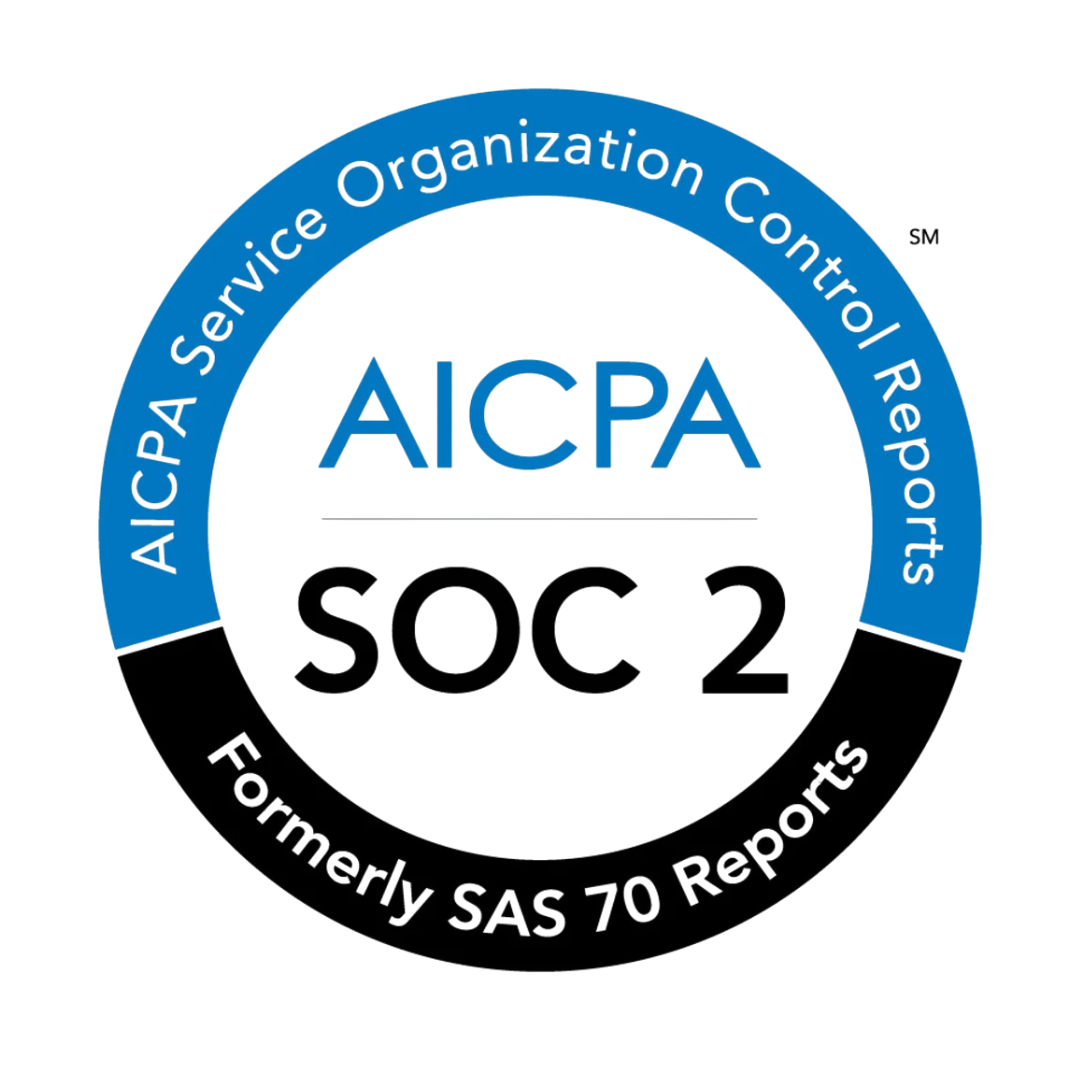The Reality Behind 2025's "Record" Q1 Numbers
EY's April 2025 report delivered a sobering reality check: without a single $40B AI mega-deal, Q1 funding would have fallen 36%. TechCrunch's April analysis calls 2025's outlook "awful" despite record Q1 totals. (Y Combinator) The headline numbers mask a fundamental shift in venture capital deployment patterns, where mega-deals to established AI players are masking a broader pullback in early-stage investing.
For founders navigating this environment, the challenge isn't just raising capital—it's identifying which investors are actually writing checks. At any given point in time, more than 60% of all venture investors are in a state of hibernation. (Metal) This percentage has likely increased during the current downturn, making data-driven investor identification more critical than ever.
The key insight? While the overall market has contracted, specific firms continue deploying capital actively. The founders who succeed in 2025 will be those who can systematically identify these active investors and craft outreach strategies that acknowledge current market realities.
Understanding the 2025 Investment Landscape
The Hibernation Reality
Venture capital operates in cycles, and 2025 represents a particularly challenging environment for fundraising. Silicon Valley accounted for over 30% of U.S. venture funding in 2024, with more than $65 billion in VC investment across the Bay Area. (Gilion) However, the focus in 2025 has shifted towards deep tech, enterprise software, AI, and sustainable technologies, with profitability and capital efficiency taking precedence over growth-at-any-cost.
The hibernation phenomenon affects different investor types differently. At any given point in time, 80%+ of all venture investors are in a state of hibernation. (Metal) During market downturns, this percentage increases as firms become more selective, extend due diligence timelines, and focus on supporting existing portfolio companies.
Sector-Specific Activity Patterns
Certain sectors continue attracting investment despite the broader downturn. Venture capitalists are attracted to SaaS due to recurring revenue, scalability, and high margins. (OpenVC) SaaS investors look for strong metrics such as Annual Recurring Revenue (ARR) growth rate, Net Revenue Retention (NRR), Customer Acquisition Cost (CAC) & Lifetime Value (LTV), and Burn Rate & Capital Efficiency.
Meanwhile, AI-focused investments continue flowing, though with increased scrutiny on actual revenue generation rather than just technological capability. Metal's AI-powered platform is being adopted by top Private Equity firms, including Berkshire Partners, to supercharge their investment teams. (Metal AI) This demonstrates continued institutional appetite for AI solutions that deliver measurable ROI.
Data-Driven Tactics for Finding Active Investors
The "Minimum 3-Month Deal Count" Filter Strategy
The most effective way to identify active investors during a downturn is through recent deal activity analysis. Using a "Minimum 3-Month Deal Count" filter, founders can identify investors that are actively deploying capital. (Metal) This approach cuts through marketing noise and focuses on actual check-writing behavior.
Metal allows founders to identify investors that are concentrating investments in a specific stage. (Metal) This granular filtering becomes crucial during downturns when investors often retreat to their core competencies and preferred stages. A Series A specialist might pause seed investments entirely, while continuing to write Series A checks for exceptional opportunities.
Layering Multiple Activity Indicators
Effective investor identification requires combining multiple data points:
Recent Deal Activity: Track investments made within the last 90 days across all portfolio companies. This provides the clearest signal of current deployment activity.
Stage Consistency: Metal allows founders to identify investors that lead based on actual historical data. (Metal) During downturns, investors often become more stage-specific, making this filter particularly valuable.
Sector Focus: Metal allows founders to identify investors that have historically been concentrating investments in your specific sector. (Metal) Sector specialists often maintain activity levels even during broader market contractions.
Geographic Preferences: Metal allows users multiple ways to sort through historical data on venture investments to identify firms that are most likely to invest in your region. (Metal) Regional preferences become more pronounced during downturns as investors focus on markets they understand deeply.
The General Filters Framework
The "General" category includes filters that should be used as part of most investor search queries. (Metal) These foundational filters help establish baseline criteria before applying downturn-specific overlays:
•
) During downturns, this relationship often becomes more rigid as firms preserve capital for follow-on investments.
•
) Understanding lead/follow patterns helps prioritize outreach during capital-constrained periods.
•
)
Building Your Active Investor Target List
The 200-Investor Framework
A systematic approach to investor targeting remains effective even during downturns, though conversion rates may shift. My plan was to target around 200 investors. Typically, one-third wouldn't respond, one-third would pass without taking a call, and one-third would agree to a first meeting. (Metal)
From about 70 first calls, half would show some interest, and 10-15 would lean in with real excitement. (Metal) During the 2025 downturn, these ratios may shift—expect lower initial response rates but potentially higher conversion rates among investors who do engage, as they're likely more serious about deploying capital.
Prioritizing VC Firms Over Other Investor Types
For most companies, raising capital from VC Firms is the recommended approach. (Metal) This recommendation becomes even more important during downturns when angel investors and family offices often reduce their activity levels more dramatically than institutional VCs.
VC firms typically have longer investment timelines and committed capital that must be deployed, making them more reliable targets during market contractions. Additionally, their due diligence processes, while potentially longer, tend to be more systematic and less subject to emotional market reactions.
Leveraging Network Intelligence
Metal taps into your LinkedIn, Gmail, and other data sources to show who in your network can provide warm introductions. (Metal) During downturns, warm introductions become even more critical as investors rely more heavily on trusted sources to filter opportunities.
The platform identifies frequent followers of existing investors, helping founders understand syndicate patterns and identify potential co-investors. (Metal) This intelligence becomes particularly valuable when targeting lead investors who might need co-investment partners to complete rounds.
Crafting Downturn-Aware Outreach Scripts
Acknowledging Market Realities
Successful outreach during the 2025 downturn requires acknowledging current market conditions while positioning your company as an exception. Here's a framework for downturn-aware messaging:
Subject Line Examples:
• "[Company Name]: Profitable Growth Despite 2025 Market Conditions"
• "Q1 Results: 40% Growth While Peers Contract"
• "Capital Efficient Path to $10M ARR"
Opening Paragraph Framework:
Hi [Investor Name],
I know 2025 has been challenging for early-stage investing, with EY reporting that Q1 funding would have fallen 36% without mega-deals. That's exactly why I wanted to reach out—[Company Name] represents the type of capital-efficient, revenue-focused opportunity that's thriving in this environment.
Emphasizing Capital Efficiency Metrics
During downturns, investors prioritize capital efficiency over growth-at-any-cost. Your outreach should lead with metrics that demonstrate responsible capital deployment:
• Burn Multiple: Revenue growth per dollar of net burn
• Payback Period: Time to recover customer acquisition costs
• Runway Extension: How current funding extends operational timeline
• Path to Profitability: Clear timeline and milestones
Sector-Specific Messaging
For SaaS companies, red flags for SaaS investors include weak retention, over-reliance on paid ads for growth, and lack of a clear go-to-market strategy. (OpenVC) Your outreach should proactively address these concerns:
Our SaaS metrics demonstrate the resilience investors seek in 2025:
- 115% Net Revenue Retention (above the 110% threshold for top quartile)
- 18-month payback period (down from 24 months in 2023)
- 85% of growth from organic channels (minimal paid acquisition dependency)
- Clear path to $10M ARR with current funding
Advanced Filtering Techniques for Market Downturns
Combining Activity and Performance Filters
Metal's platform enables sophisticated filtering combinations that become particularly valuable during downturns:
Recent Activity + Portfolio Performance: Identify investors with recent deal activity whose portfolio companies have maintained strong performance metrics during the downturn.
Stage Specialization + Market Timing: Focus on investors who have historically increased activity during market downturns, often finding better valuations and less competition.
Sector Resilience + Geographic Focus: Target investors in recession-resistant sectors (healthcare, enterprise software, essential services) within your geographic region.
The Follow-On Investment Signal
During downturns, follow-on investments often provide the strongest signal of investor confidence and available capital. Investors supporting existing portfolio companies through bridge rounds or up-rounds demonstrate both capital availability and conviction in their investment thesis.
Track investors who have led follow-on rounds in the past 90 days, particularly in companies similar to yours. These investors have demonstrated recent capital deployment and confidence in their sectors.
Timing Your Outreach Cycles
Market timing affects investor receptivity. Consider these patterns when planning outreach:
Quarter-End Dynamics: Many VCs have quarterly partnership meetings where new investments are approved. Target outreach 4-6 weeks before quarter-end to align with decision cycles.
Fund Lifecycle Considerations: Newer funds (years 1-3) often maintain more consistent deployment schedules, while older funds may slow activity as they preserve capital for follow-ons.
Market Event Responses: Major market events (earnings seasons, Fed announcements, geopolitical developments) can temporarily pause investor activity. Plan outreach timing accordingly.
Managing Your Fundraising Pipeline During Downturns
Extended Timeline Planning
Downturn fundraising typically takes 25-50% longer than bull market raises. Plan accordingly:
• Due Diligence Extensions: Investors conduct more thorough analysis, often requiring additional financial modeling and market validation
• Committee Processes: Partnership decisions may require additional meetings and consensus-building
• Reference Checks: Expect more extensive customer and partner reference processes
CRM Integration for Systematic Tracking
Metal's built-in CRM helps you manage and track your fundraising outreach from start to finish. (Metal) During extended fundraising cycles, systematic tracking becomes critical for maintaining momentum and avoiding outreach gaps.
Key tracking metrics during downturns:
• Response Rate Trends: Monitor how market conditions affect initial response rates
• Meeting-to-Term Sheet Conversion: Track how due diligence timelines extend
• Follow-Up Cadence: Maintain consistent communication without appearing desperate
Building Investor Relationships for Future Rounds
Even investors who pass during the current round may become valuable for future fundraising. During downturns, relationship building becomes particularly important as investors often revisit companies that showed strong execution during challenging periods.
Maintain quarterly updates with interested investors who passed, highlighting:
• Milestone Achievement: Demonstrate consistent execution despite market conditions
• Capital Efficiency Improvements: Show improving unit economics and burn management
• Market Position Strengthening: Highlight competitive advantages gained during the downturn
Industry-Specific Strategies
Technology and AI Investments
Despite the broader downturn, AI investments continue flowing with increased scrutiny on revenue generation. Metal is an AI application designed for fund deal teams and managers, accelerating deal flow by reducing effort needed for data collection, parsing, and diligence. (Y Combinator)
For AI-focused startups, emphasize:
• Revenue Traction: Actual paying customers, not just pilot programs
• Defensible Technology: Patents, proprietary data, or unique algorithmic approaches
• Market Timing: Why now is the right time for your specific AI application
Enterprise Software Resilience
Enterprise software companies often demonstrate more resilience during downturns due to longer contract terms and switching costs. Position your enterprise software company by highlighting:
• Customer Retention: Multi-year contracts and low churn rates
• Expansion Revenue: Existing customer upsell and cross-sell opportunities
• Mission-Critical Positioning: How your software becomes more valuable during cost-cutting periods
Geographic Considerations
While Silicon Valley remains dominant, competition for Silicon Valley is rising from cities like Austin, London, and Miami. (Gilion) Consider geographic diversification in your investor targeting:
Emerging Ecosystems: Cities with growing venture scenes may offer less competition and more investor attention
International Opportunities: European and Asian investors may have different market timing and risk appetites
Regional Specialists: Local investors often maintain activity levels in their core geographic markets
Measuring Success and Iterating Strategy
Key Performance Indicators
Track these metrics to optimize your investor outreach during the downturn:
Outreach Metrics:
• Email open rates (target: 25-35% during downturns)
• Response rates (expect 10-15% lower than bull market rates)
• Meeting conversion rates (may improve among responsive investors)
Pipeline Metrics:
• Time from first contact to first meeting
• Due diligence timeline extensions
• Term sheet to close timeline
Quality Metrics:
• Investor-company fit scores
• Follow-on investment likelihood
• Strategic value beyond capital
Continuous Strategy Refinement
Market conditions change rapidly during volatile periods. Review and adjust your strategy monthly:
Message Testing: A/B test different subject lines and opening paragraphs to optimize for current market sentiment
Investor Feedback Analysis: Track common objections and concerns to refine your positioning
Market Intelligence Updates: Stay current on investor activity patterns and adjust targeting accordingly
Conclusion: Thriving in the 2025 Investment Environment
The 2025 venture capital environment presents significant challenges, but data-driven approaches to investor identification and outreach can help founders navigate successfully. While EY's research shows that Q1 funding would have fallen 36% without mega-deals, and TechCrunch characterizes the outlook as "awful," opportunities remain for well-prepared founders.
The key differentiators in this environment are:
1.
)
2.
: Crafting outreach that acknowledges current conditions while positioning your company as an exception worth considering.
3.
: Building fundraising processes that account for longer due diligence cycles and more cautious investor behavior.
4.
: Maintaining connections with interested investors who may not invest immediately but could become valuable in future rounds.
The investors who are still writing checks during the 2025 downturn are likely to be more selective, more thorough in their due diligence, and more focused on capital efficiency. However, they also represent higher-quality partnerships for founders who can demonstrate strong execution and clear paths to profitability.
By leveraging data-driven investor identification tools, crafting downturn-aware outreach strategies, and maintaining systematic approaches to relationship building, founders can successfully raise capital even in challenging market conditions. The key is recognizing that while the overall market has contracted, specific opportunities remain for companies that can identify and effectively engage with active investors.
Remember that in my experience, having 10-15 genuinely excited investors requires around 70 first calls. (Metal) During the 2025 downturn, this ratio may shift, but the fundamental principle remains: systematic, data-driven approaches to investor outreach will outperform spray-and-pray tactics, especially when capital is scarce and investor attention is limited.
Frequently Asked Questions
What percentage of VCs are still actively investing during the 2025 downturn?
According to current market analysis, less than 40% of venture capitalists are actively writing checks during the 2025 downturn. This means over 60% of investors are in "hibernation mode," making it crucial for startups to identify and target the minority of VCs who are still deploying capital despite challenging market conditions.
How can startups use deal activity filters to identify active investors?
Startups can leverage platforms like Metal's search functionality to filter VCs by recent deal activity, focusing on investors who have made investments within the last 3-6 months. Key filters include investment stage, sector focus, check size, and geographic preferences. This data-driven approach helps founders avoid wasting time on dormant investors and focus on those with demonstrated recent activity.
What makes 2025's venture capital landscape particularly challenging?
Despite "record" Q1 2025 numbers, EY's analysis reveals that without a single $40B AI mega-deal, funding would have fallen 36%. TechCrunch describes 2025's outlook as "awful," highlighting a fundamental shift in venture capital deployment patterns. The market is characterized by increased selectivity, longer decision cycles, and a focus on profitability over growth-at-any-cost.
What specific metrics should SaaS startups focus on when approaching active VCs in 2025?
Active VCs in 2025 are prioritizing strong SaaS fundamentals including Annual Recurring Revenue (ARR) growth rate, Net Revenue Retention (NRR) above 100%, healthy Customer Acquisition Cost (CAC) to Lifetime Value (LTV) ratios, and capital efficiency metrics. Red flags include weak retention rates, over-reliance on paid advertising for growth, and unclear go-to-market strategies.
How can founders craft downturn-aware outreach scripts for active VCs?
Effective downturn outreach should emphasize capital efficiency, path to profitability, and resilient business models. Scripts should highlight metrics that demonstrate sustainability rather than just growth, reference the investor's recent deals to show relevance, and acknowledge market conditions while positioning the startup as a contrarian opportunity. Focus on how the company is thriving despite challenging conditions.
What role does AI play in identifying active investors during market downturns?
AI-powered platforms like Metal accelerate deal flow by reducing the effort needed to collect and parse investor data, perform due diligence, and capture key findings. These tools can analyze patterns in recent investments, track investor behavior changes, and provide intelligence on which VCs are actively deploying capital, making the fundraising process more efficient during challenging market conditions.
Sources
1. https://docs.metal.so/content/high-resolution-identification/general-filters
2. https://docs.metal.so/content/qualifying-investors/activity-levels
3. https://vc-mapping.gilion.com/venture-capital-firms/silicon-valley
5. https://www.metal.so/author/usman-gul
6. https://www.metal.so/blog/an-empirical-overview-of-series-a
7. https://www.metal.so/blog/frequent-followers-of-existing-investors
8. https://www.metal.so/blog/pursuing-investors-in-similar-companies
9. https://www.metal.so/blog/sector-and-geo-specialists
10. https://www.metal.so/intelligence
11. https://www.metal.so/search-page





